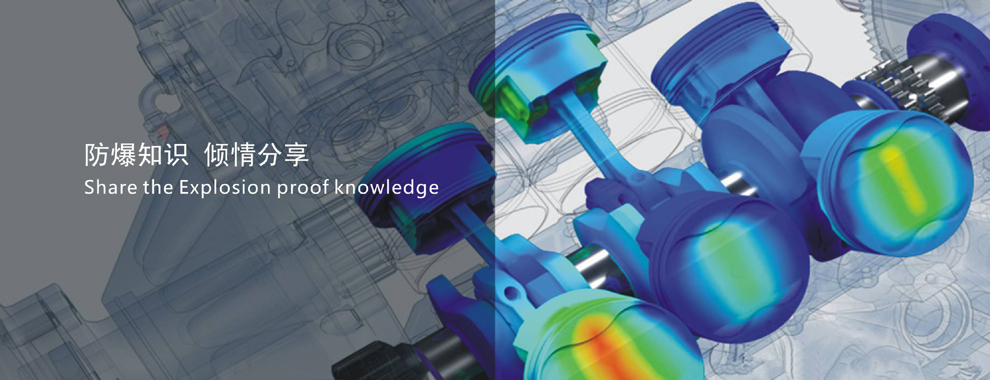Ex-proof Standards
ENl755:2000 'Industrial Vehicle Safety Flammable Gases, Vapors, Smoke, and Dust Potentially Explosive Environment Vehicles'
The standard specifies the safety requirements for industrial vehicles for explosive atmospheres, including the safety requirements and safety measures for load handling devices, as well as the explosion-proof technical requirements for the inspection of these safety requirements and safety measures.
The European Commission's 'Potential Equipment and Protection System for Explosive Atmospheres' (94/9/EC) directive covers mine and non-mine equipment, machinery and electrical equipment, and extends the potentially explosive atmosphere to airborne dust and flammable. Sex gas, flammable vapors and mists.
This directive is the 'new method' directive commonly known as ATEX 100A, the current ATEX explosion-proof directive. It specifies the technical requirements to be applied for equipment intended for use in potentially explosive atmospheres - the basic health and safety requirements and the conformity assessment procedures that must be applied before the equipment is placed on the European market within its scope of use.
GB3836-2000 'Electrical Equipment for Explosive Gas Environments'
The standard equivalent is the international standard IEC60079-0:1998 “Electrical Equipment for Explosive Gas Environments”. It is divided into 17 parts under the general heading. It is the basic standard for electrical equipment for explosive gas atmospheres, and the standards stipulate the use of explosive gas atmospheres. General requirements and inspection procedures for the structure, inspection and marking of electrical equipment, Ex inductions, Ex elements.
GB19854-2000 General Principles of Explosion Proof Technology for Industrial Vehicles in Explosive Atmospheres
The standard is based on the European Standard ENl 755:2000 'Safety of flammable gases, vapours, fumes and dust for industrial vehicles'. The standard specifies the safety requirements and safety of industrial vehicles for explosive atmospheres, including load handling devices. Measures, and explosion-proof technical requirements such as inspections of these safety requirements and safety measures. It is applicable to the explosion-proof structure design, manufacture and inspection of industrial vehicles for explosive atmospheres.
GB20800.1-2006 General Principles of Explosion Protection for Reciprocating Internal Combustion Engines Used in Explosive Atmospheres Part 1 Class II Internal Combustion Engines for Combustible Gases and Vapors.
The standard specifies the safety requirements and safety measures for reciprocating Type II 2G and 3G reciprocating internal combustion engines for explosive atmospheres formed by flammable gases and vapours, which are used to eliminate or limit the various hazards and hazards that may be generated by internal combustion engines. The standard applies to the design, manufacture and inspection of explosion-proof structures for internal combustion engines.
GB20800.2-2006 General Principles of Explosion Proof for Reciprocating Internal Combustion Engines for Explosive Atmospheres Part 2 Class II Internal Combustion Engines for Combustible Dust Environments
The standard specifies the safety requirements and safety measures for reciprocating Type II 2D and 3D reciprocating internal combustion engines for combustible dust environments, which are used to eliminate or limit the various hazards and hazards that the internal combustion engine may generate. The standard applies to the design, manufacture and inspection of explosion-proof structures for internal combustion engines.
GB20800.3-2008 General Principles of Explosion Proof for Reciprocating Internal Combustion Engines for Explosive Atmospheres Part 3: Class I Internal Combustion Engines in Underground Mine Roadways with Methane and/or Combustible Dust
The standard stipulates the safety requirements and safety measures for reciprocating type I M2 reciprocating internal combustion engines in underground mining areas where methane and/or flammable dust are present, to eliminate or limit the various hazards and hazards that may be generated by internal combustion engines. The standard applies to the design, manufacture and inspection of explosion-proof structures for internal combustion engines.
GB12476.1-2000 'Electrical equipment for use in combustible dust environments - Part 1: Electrical equipment protected by enclosures and limited surface temperature - Section 1: Technical requirements for electrical equipment'
The standard specifies the design, construction and test requirements for electrical equipment protected by enclosures and limited surface temperatures in combustible dust environments.
GB12476.2-2006 'Electrical equipment for use in combustible dust environments - Part 1: Electrical equipment protected by enclosures and limited surface temperature - Section 2: Selective installation and maintenance of electrical equipment'
The standard specifies guidelines for the selection, installation and maintenance of electrical equipment protected by enclosures and restricted surface temperatures in flammable dust environments.
U.S. and North American regions are recognized as UL safety certification marks and are shorthand for Underwriter Laboratories Inc. The UL mark is divided into three categories, namely, column name, classification and accreditation mark, which are respectively applied to different service products.
As a recognized safety certification in the United States and North America, the UL mark is a safety and quality credit card, and it is a special pass for entering the US and North American markets.
U.S. and North American regions are recognized as UL safety certification marks and are shorthand for Underwriter Laboratories Inc. The UL mark is divided into three categories, namely, column name, classification and accreditation mark, which are respectively applied to different service products.
As a recognized safety certification in the United States and North America, the UL mark is a safety and quality credit card, and it is a special pass for entering the US and North American markets.
Home
Previous
1
Next
End





